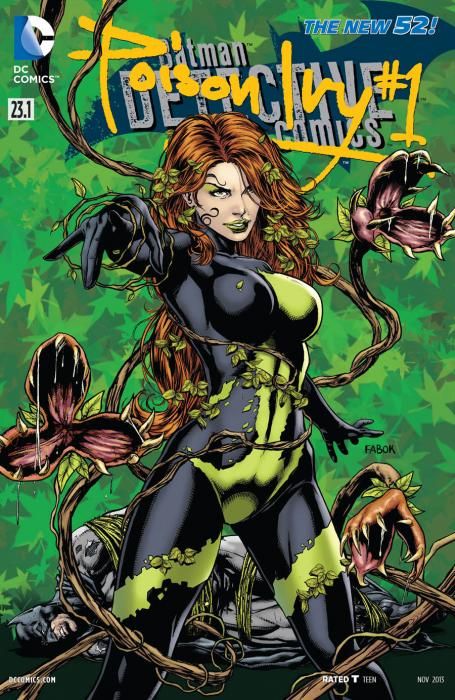Poison Ivy's a character that's been approached from a vast number of different angles, all while keeping the same basic thrust of the character intact. While some interpretations are better than others (John Francis Moore and P. Craig Russell's "Hothouse" two-parter in "Legends of the Dark Knight" being a particular high), it's always fun to see what Pamela Isley is up to. She's got the spotlight in "Detective Comics #23.1: Poison Ivy," as her latest origin moves alongside her attempt to control Gotham City as it descends into anarchy, but Derek Fridolfs and Javier Pina's rendition lacks any real punch.
A character as familiar as Poison Ivy runs the risk of becoming a little too familiar, and often you see all sorts of additions shoved into a revisited origin to try and shake the audience out of its stupor. Strangely enough, Fridolfs seems to go in almost the exact opposite direction; with the exception of an abusive father, "Detective Comics" #23.1 presents nothing that hasn't been seen before with the character, which wouldn't be a problem, save that what's shown is pretty lackluster. Isley arguing with Bruce Wayne in his office is about as exciting as watching paint dry, but it lasts for two and a half pages. Meanwhile, the actual accident that transforms her into Poison Ivy is not only in a single panel, but you don't realize that's what happened until the narration box on the next page explains what happened. There's a real pacing problem here, and with a lot of the defining moments curiously muted (the scene where Isley gets out of jail because she's seduced the head of the university is about as vanilla as you could make it and then some), there's nothing left to grab hold of the reader.
Pina's art is good in some places, but not so much in others. I like the way that he draws the flashbacks to Poison Ivy's childhood in the manner of a children's book, complete with a textured background color from John Kalisz. It's a smart call, one that makes those pages stand out from the rest of the comic. On the other hand, the Gotham City scenes are lacking in any real drama. Backgrounds are missing left and right, and with Kalisz trying to put something there to take their place, you end up with scenes where a woman trips on a solitary piece of rock in an otherwise empty green haze. It ends up looking ridiculous, rather than dangerous or scary. There's just no energy to these pages, even when the mass destruction kicks in.
Of all the Batman villains out there, Poison Ivy seems to be the easiest one to get right, so this stumble is all the more disappointing. There are a lot of fantastic Poison Ivy stories that will be remembered over the years, but this one seems sadly forgettable.

